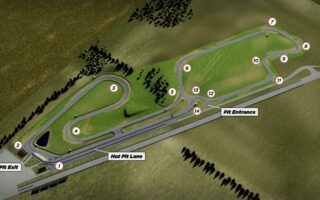In the realm of motorsport, few activities encapsulate pure excitement and competition quite like kart racing. This thrilling endeavor, where speed meets precision, invites drivers of all ages to unleash their inner racer on winding tracks designed to test skill and strategy. From the gentle hum of engines revving to the adrenaline-pumping rush of acceleration, kart racing offers an accessible yet exhilarating experience that can turn everyday enthusiasts into fervent competitors. Whether you’re a seasoned racer mastering tight corners or a novice navigating the curves for the first time, the karting experience promises unforgettable moments, camaraderie, and an introduction to the vibrant world of motorsport. Join us as we delve into the fast-paced universe of kart racing, exploring its origins, the mechanics of the sport, and the thrill that keeps drivers coming back for more.
Table of Contents
- The Thrills of Kart Racing: Mastering the Art of Speed
- Essential Gear for Kart Racers: Choosing the Right Equipment
- Track Techniques: Navigating Corners and Chicanes Like a Pro
- Safety First: Best Practices for a Secure Racing Experience
- Q&A
- Future Outlook
The Thrills of Kart Racing: Mastering the Art of Speed
The thrill of kart racing lies not just in the high speeds, but in the intricate dance between driver and machine. As the engine roars to life, adrenaline surges, and your heart races alongside the revs. Mastering this art requires a keen sense of balance, timing, and an instinct for the track. Whether you’re navigating sharp turns or slicing through straights, every decision counts. The beauty of kart racing is that it challenges you to find the perfect line, to anticipate the next curve, and to harness the raw energy of your kart. This exhilarating sport allows you to embrace the essence of racing—where milliseconds can define victory or defeat.
To truly master kart racing, one must pay attention to several key elements that influence performance on the track. Here are some critical aspects to consider:
- Cornering Techniques: Learn how to drift and apex effectively.
- Throttle Control: Smoothly manage acceleration to maintain speed.
- Braking Points: Identify the perfect moment to apply brakes for optimal control.
- Track Awareness: Understand the layout and adapt your style accordingly.
- Weight Distribution: Shift your body for better handling and balance.
| Technique | Description |
|---|---|
| Drifting | Sliding through corners for speed maintenance. |
| Apexing | Hitting the inside of the corner to minimize distance. |
| Slipstreaming | Gaining speed by following closely behind another kart. |
| Late Braking | Braking later to maintain higher speeds into turns. |
Essential Gear for Kart Racers: Choosing the Right Equipment
When it comes to kart racing, having the right equipment is essential for both safety and performance on the track. One of the first pieces of gear you should invest in is a reliable helmet. A good helmet not only protects your head but also must meet safety standards such as SNELL or FIA certifications. Additionally, consider wearing a racing suit made of fire-resistant materials, which provides protection against abrasions during crashes. Don’t forget to choose a good pair of gloves that offer grip and protection while allowing you to maintain full control of the steering wheel.
Another key component of your kart racing gear is the racing shoes. Look for lightweight shoes that provide excellent pedal feel and support. For maximum visibility and protection, consider wearing a neck brace and rib protector to shield vital areas from potential impact. don’t underestimate the importance of karting goggles which will protect your eyes from debris and improve visibility on the track. The right mix of these items will not only keep you safe but will also enhance your race performance.
| Item | Key Features |
|---|---|
| Helmet | Safety certified (SNELL/FIA), lightweight, comfortable fit |
| Racing Suit | Fire-resistant, multi-layered, breathable fabric |
| Gloves | Grip-enhanced, padded, flexible for steering control |
| Racing Shoes | Lightweight, slip-resistant sole, ankle support |
Track Techniques: Navigating Corners and Chicanes Like a Pro
Mastering the art of cornering and navigating chicanes is essential for any aspiring kart racer. To gain a competitive edge, focus on your racing line, which is the fastest route around the track. Embrace the concept of braking points—learn to anticipate when to ease off the accelerator and apply the brakes. As you approach a corner, aim to position your kart on the outside edge, then swiftly transition to the inside during the turn. This technique allows for a smoother trajectory and helps maintain speed throughout the maneuver.
Additionally, practicing throttle control can significantly enhance your cornering ability. As you exit a corner or chicane, gradually apply the throttle instead of flooring it. This will prevent loss of traction and keep your kart balanced. Consider these vital tips:
- Look ahead: Always focus on where you want to go rather than on obstacles.
- Weight transfer: Shift your body’s weight appropriately to help steer the kart through tight corners.
- Consistency: Repeat the same cornering techniques until they become second nature.
Safety First: Best Practices for a Secure Racing Experience
Ensuring a safe karting experience is pivotal for both novice and seasoned racers. Proper attire is an essential starting point; drivers should wear helmets, gloves, and closed-toe shoes that provide adequate grip. It’s advisable to dress in long sleeves and pants made from durable materials to protect against friction and debris. Always double-check that your gear fits correctly and is in good condition before hitting the track. Familiarizing yourself with the kart’s controls and functions will allow you to react swiftly in case of an emergency, minimizing risks on the track.
Collaboration with fellow racers and track officials is key when it comes to maintaining safety. Before any race, it’s crucial to engage in a pre-race briefing to understand the track layout, identify hazards, and review the rules. During the race, staying aware of your surroundings and respecting the personal space of other racers is vital; aggressive maneuvers can lead to accidents. Following proper etiquette not only enhances the racing experience but also fosters a culture of safety. Consider utilizing the table below to prioritize essential safety practices:
| Safety Practice | Description |
|---|---|
| Pre-Race Briefing | Gather with racers to discuss rules and track hazards. |
| Wear Protective Gear | Utilize helmets, gloves, and appropriate clothing. |
| Maintain Awareness | Stay alert to surroundings and race dynamics. |
| Follow Etiquette | Respect boundaries and drive safely around others. |
Q&A
Q&A on Kart Racing: A Fast-Paced Fun Experience
Q: What is kart racing?
A: Kart racing is a popular motorsport involving small, open-wheel vehicles called karts. These karts are typically powered by either gas or electric engines and are designed for racing on paved tracks. The sport appeals to a wide range of participants, from children to adults, offering exhilarating speed and competitive spirit.
Q: How did kart racing originate?
A: Kart racing originated in the late 1950s in the United States. Initially developed as a hobby for car enthusiasts, the first karts were homemade creations, built from lawnmower engines and scrap materials. As interest grew, karting evolved into a formalized sport, leading to the establishment of organized racing events and governing bodies.
Q: What are the different types of karts used in racing?
A: There are several types of karts, each designed for specific racing conditions and driver levels. Cadet karts are for young drivers, while shifter karts are equipped with manual transmissions for more experienced racers. Other categories include rental karts for recreational use and high-performance race karts, which are built for speed and agility on competition tracks.
Q: What kind of tracks are used for kart racing?
A: Kart racing tracks can vary widely, but they are usually asphalt or concrete and designed to allow for tight turns and fast straights. Some tracks are indoor facilities, while others are outdoor circuits. The design of the track can significantly influence racing strategies and driver performance.
Q: Is kart racing safe?
A: While kart racing is generally considered safe, it is not without risks. Safety measures, including helmets, padded suits, and seat belts, are crucial in reducing the risk of injury. Tracks often implement strict safety regulations and guidelines to ensure the well-being of drivers. It’s important for participants to receive proper training and adhere to safety protocols.
Q: Can anyone participate in kart racing?
A: Yes, kart racing is accessible to a wide audience! Many karting venues offer rental karts, allowing people of all ages and skill levels to experience the thrill of racing without needing to own a kart. For those seeking a competitive edge, many organizations also offer leagues, classes, and events for aspiring racers.
Q: What skills do you need to be successful in kart racing?
A: Success in kart racing requires a combination of driving skills, concentration, and strategic thinking. Drivers must hone their ability to navigate turns, accelerate efficiently, and understand their kart’s handling. Mental toughness and the ability to make quick decisions during a race are also crucial for competitive performance.
Q: Are there professional kart racing events?
A: Absolutely! Kart racing has a well-established competitive scene, with numerous championships and events held globally. Professional series like the FIA Karting World Championship attract top talent and serve as a stepping stone for drivers aspiring to enter higher levels of motorsport, including Formula 1.
Q: How can someone get started in kart racing?
A: To get started in kart racing, one can visit a local karting facility to participate in rental sessions or events. For those serious about racing, joining a karting club is an excellent way to gain experience, acquire a personal kart, and participate in organized races. Plus, many tracks offer classes and coaching to help newcomers build their skills.
Q: What makes kart racing an exciting sport?
A: Kart racing’s excitement derives from its blend of speed, competition, and unpredictability. The close proximity of karts on the track creates thrilling overtakes and intense battles for position. It is not only a test of speed but also a strategic game where drivers must outsmart their opponents while mastering the art of racing. With its accessibility and social aspect, kart racing offers an adrenaline-pumping experience for everyone involved.
Future Outlook
As the engines roar to life and the checkered flag waves, the world of kart racing unfolds as a vibrant tapestry of speed, strategy, and skill. From the novice navigating their first track to the seasoned racer honing their craft, each lap tells a story of determination and exhilaration. This thrilling sport, often a gateway to professional racing, captivates enthusiasts of all ages, fostering a sense of community and camaraderie among competitors and fans alike. Whether you’re in the driver’s seat or cheering from the stands, kart racing offers an experience that ignites the spirit of competition and the joy of the journey. So, as we pull into the pits for now, remember that every racer, every kart, and every race holds the potential for the next unforgettable moment on the track. Until next time, may your wheels stay gripped, your heart beat fast, and your passion for the sport burn bright.



